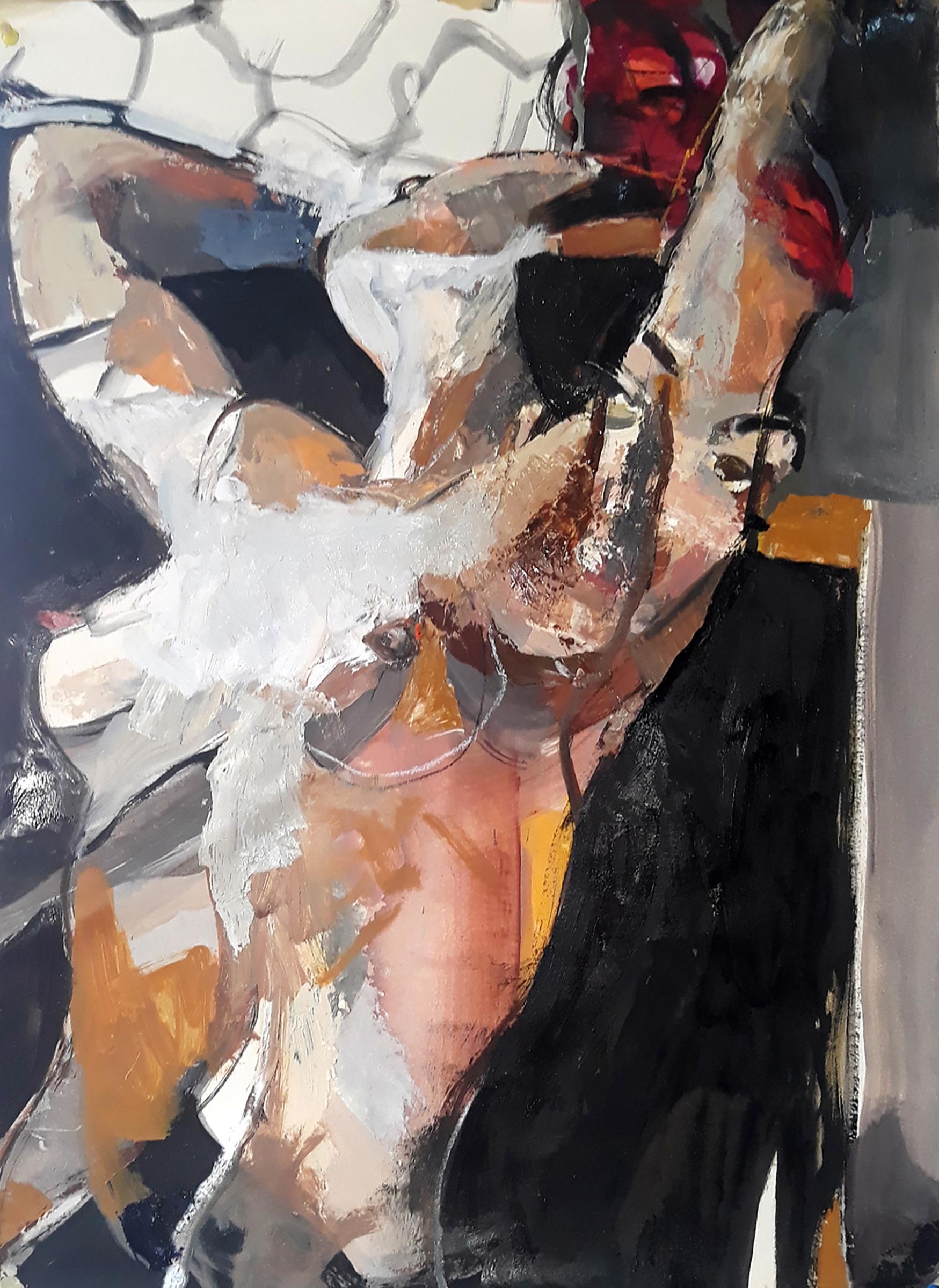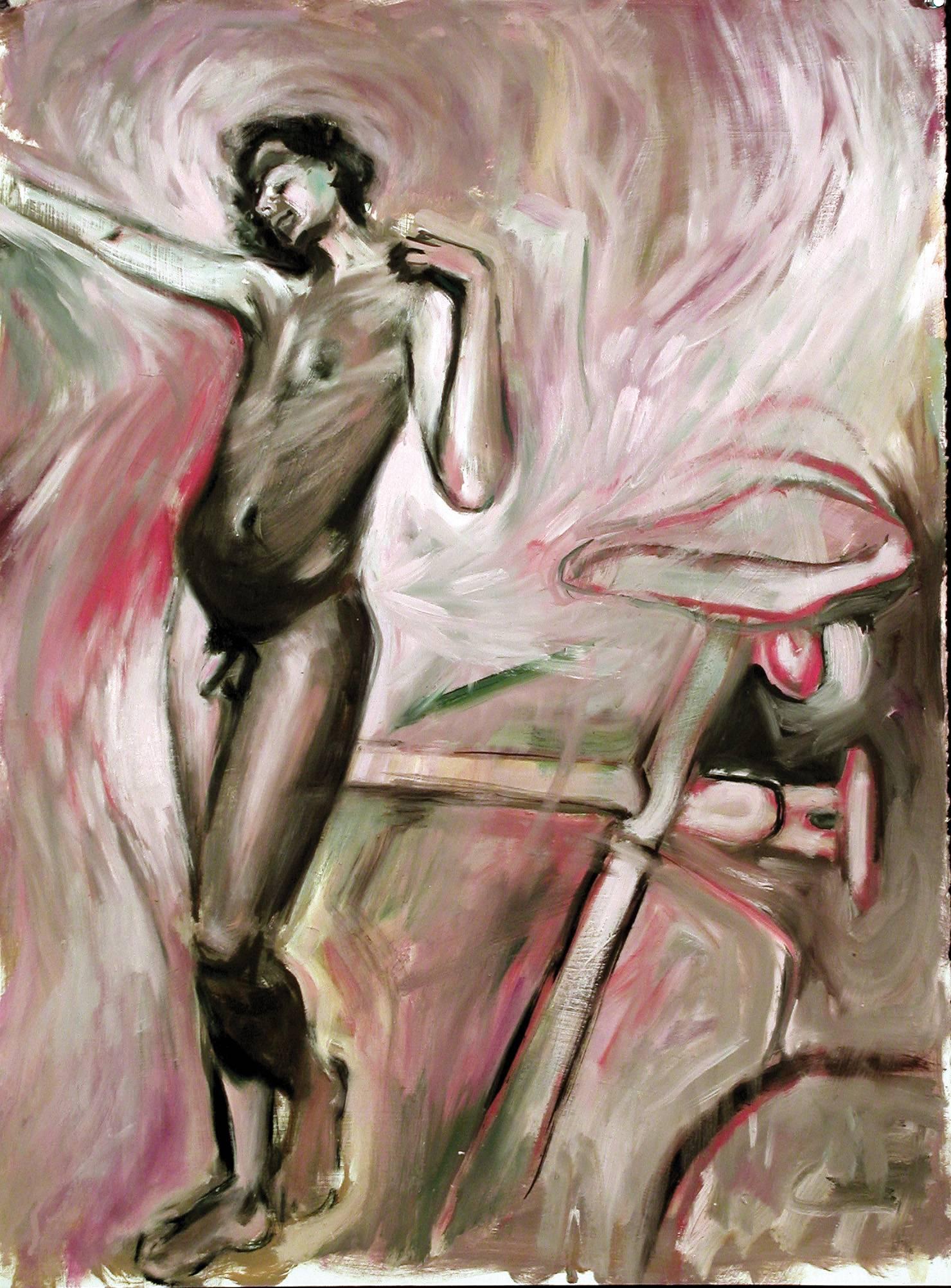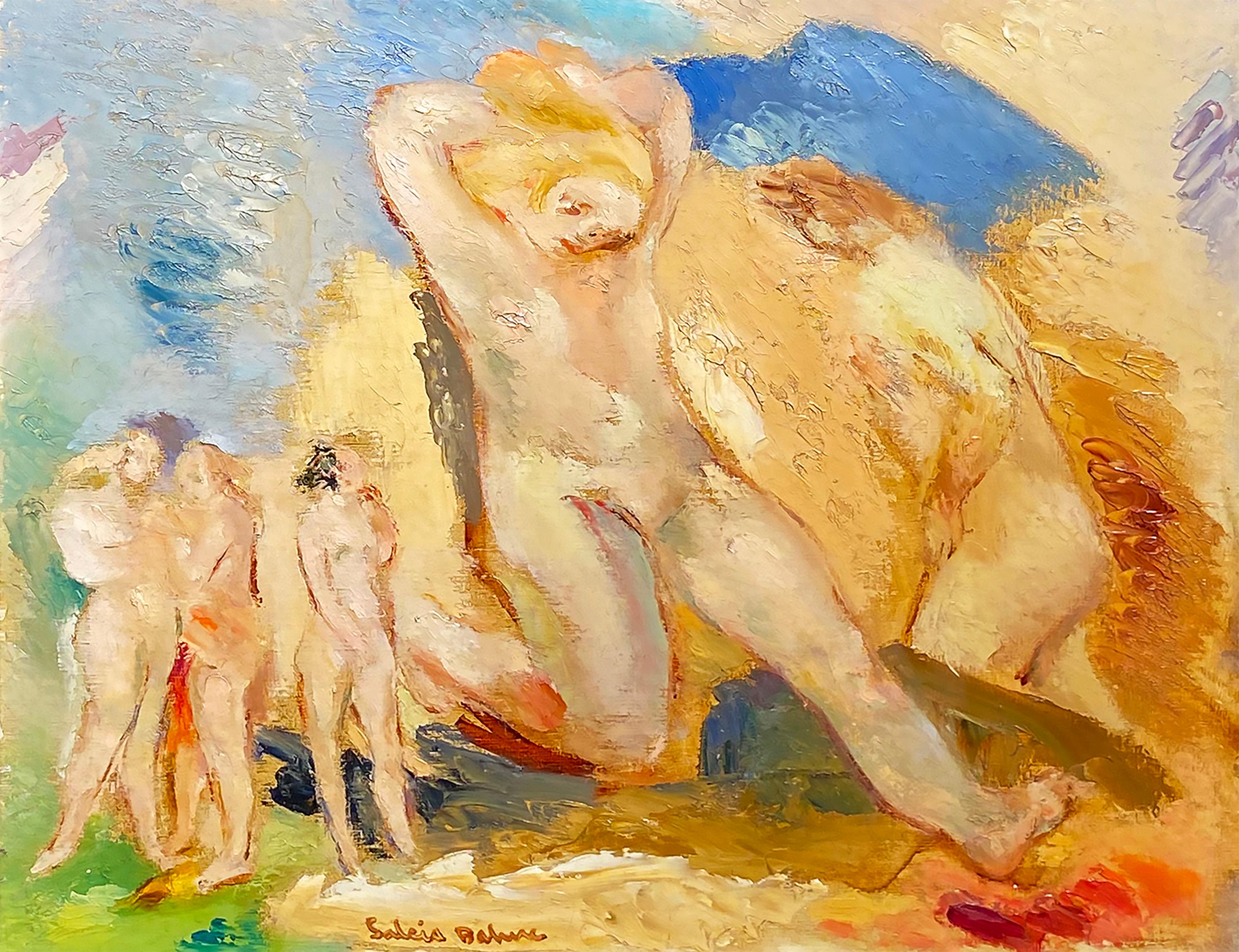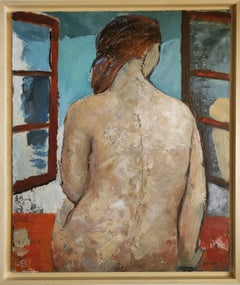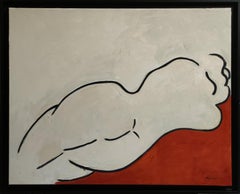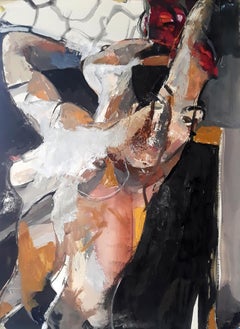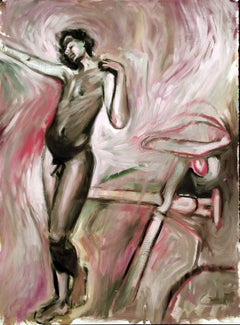SOPHIE DUMONTrêveries, woman nude, oil, figurative, contemporary expressionism, french 2016
2016
About the Item
- Creator:SOPHIE DUMONT (1964, French)
- Creation Year:2016
- Dimensions:Height: 28.75 in (73 cm)Width: 36.23 in (92 cm)Depth: 0.79 in (2 cm)
- Medium:
- Movement & Style:
- Period:
- Framing:Frame IncludedFraming Options Available
- Condition:
- Gallery Location:LANGRUNE-SUR-MER, FR
- Reference Number:1stDibs: LU2430213340442
SOPHIE DUMONT
Born in Paris on April 09, 1964. Lives and works in Langrune sur Mer (Normandy) Sophie Dumont moved away from the Metropolis to live a few years in the Antilles, Spain and finally in Morocco. On her return to France in 1991, she took the plunge and grabbed the brushes. From her earliest childhood, she was immersed in the world of painting, through the drawings of Henriette Dumont, her paternal grandmother who sketches at all times, children and grandchildren with a line that can recall that of Matisse . Sophie Dumont is interested in the history of art, works for several years, searches, discovers in order to fully realize herself around 2007. Its invoice becomes stronger, the layers multiply on the canvas, revealing a beach or cliffs to whoever wants to discover them. His work in oil takes on its full value in successive layers and transparencies in shades of gray and white. Sophie DUMONT extends her exploration of the Norman universe. The environment is familiar to her, but she stubbornly welds the slightest vibrations. The omnipresent landscape hides from view to reveal furtive appearances that drown in the pearly and translucent light. The subliminal vision of a horizon cut out by distant cliffs evokes a daily life punctuated by a constantly changing space. Nothing disturbs the tranquility of a space shaped by these diaphanous lights, a mixture of grays and shadows that subtly play with the fluidities of air and water. These landscapes imbued with a lyricism bordering on abstraction seem to move away from a reality that the heaviness of traditional painting wants to find in the recognizable. The representation is irreversibly detached from the motif to better reflect the emotion aroused by the total immersion in the painting. The image fades before the senses, giving the viewer his freedom of interpretation. Sophie DUMONT's abstract is not a concept, it is an approach where each canvas is built around graphics put into perspective by color. The drawing can recall the shape of a body or the meanders of a landscape. It is only the unpremeditated interpretation of a figurative idea, which takes other forms in space. The canvas is structured around a play of curves and lines filtering the lights. It is in this refined construction that the palette of often contrasting tones enters the scene. But the substance is never raw, drawing from its maturation lyrical effects which are the result of a fruitful work of the material. The knife shapes the material in successive layers that merge into a combination of shimmering colors. His perception is only the expression of his own emotions, submitted simply to the effect of modulations transcribed by the artist. Hence this permanent relationship between works with sometimes changing appearances and spirit, but which symbolize a coherent and sincere approach. Francois Laune
- ShippingRetrieving quote...Ships From: LANGRUNE-SUR-MER, France
- Return PolicyA return for this item may be initiated within 14 days of delivery.
More From This Seller
View All21st Century and Contemporary Expressionist Figurative Paintings
Oil
21st Century and Contemporary Expressionist Figurative Paintings
Oil
21st Century and Contemporary Expressionist Nude Paintings
Oil
21st Century and Contemporary Minimalist Figurative Paintings
Oil
21st Century and Contemporary Minimalist Figurative Paintings
Oil
21st Century and Contemporary Contemporary Nude Paintings
Oil
You May Also Like
2010s Expressionist Nude Paintings
Canvas, Oil
2010s Expressionist Figurative Paintings
Board, Oil
2010s Expressionist Nude Paintings
Paper, Oil, Oil Crayon
1980s Expressionist Figurative Paintings
Paper, Oil
20th Century Expressionist Nude Paintings
Oil, Canvas
1940s Expressionist Figurative Paintings
Oil


